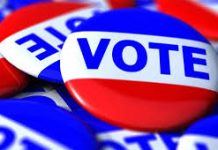How Polls Were So Off in 2016 and 2024
OCTOBER 1, 2024
The 2016 and 2020 presidential elections are often cited as examples of polling failures, especially at the state level. Several factors contributed to why the polls missed the mark in these races.
- Undersampling Key Voters: In 2016, one of the biggest issues was that many pollsters underestimated support for Donald Trump among non-college-educated white voters, particularly in key Midwestern states. While national polls showed Hillary Clinton with a consistent lead, they failed to capture this crucial demographic’s support for Trump, leading to surprises in states like Michigan, Wisconsin, and Pennsylvania.
- Shy Voter Effect: Another theory is the “shy voter” phenomenon, where respondents are reluctant to express support for a controversial candidate, like Trump, to pollsters. This effect can distort polling data, particularly when voters are concerned about how their preferences might be perceived. However, this theory remains debated, and its impact is difficult to quantify.
- Late-Deciding Voters: Both in 2016 and 2020, many voters made up their minds in the final days of the election. In 2016, a significant portion of late deciders broke for Trump, which was not fully captured by earlier polls. In 2020, while national polls were more accurate, state-level polling struggled to account for these late shifts, particularly in contested areas like Florida and Pennsylvania.
- Turnout Misjudgments: Pollsters try to predict who will show up on election day, but this is often difficult. In both 2016 and 2020, turnout among certain groups—like rural voters and non-college-educated voters—was higher than expected. Meanwhile, the anticipated high turnout among some Democratic-leaning groups, like young voters and people of color, didn’t materialize to the same extent. This mismatch between expected and actual turnout was a key reason why state polls were so far off.
Polls Can Still Be Useful, But With Caution
Despite these challenges, polls remain a useful tool when taken with a grain of caution. They offer a snapshot of where the race stands at any given time and help identify broad trends. The key is to look at multiple polls and average the results to smooth out the variations caused by different methodologies. Websites like RealClearPolitics and FiveThirtyEight offer poll aggregations that can provide a more balanced view of the race.
Additionally, understanding the margin of error is critical. If a poll has a margin of error of +/- 3%, then a 2% lead for one candidate may actually mean the race is a statistical tie. In close elections, this margin of error can make a big difference in how results are interpreted.
Ultimately, polling is not a perfect science. While it can provide valuable insights, it’s important to view it as just one piece of the larger puzzle in understanding electoral dynamics. As technology and methodologies improve, pollsters will likely get better at capturing the true state of elections. But for now, voters should remain cautious and avoid overrelying on any single poll to predict the future.
In the contested states of Pennsylvania and beyond, differences in sampling methods, likely voter models, and weighting factors contribute to the variations in polls. Understanding these factors, as well as the lessons learned from recent election cycles, can help voters make more informed judgments about the data they see.





